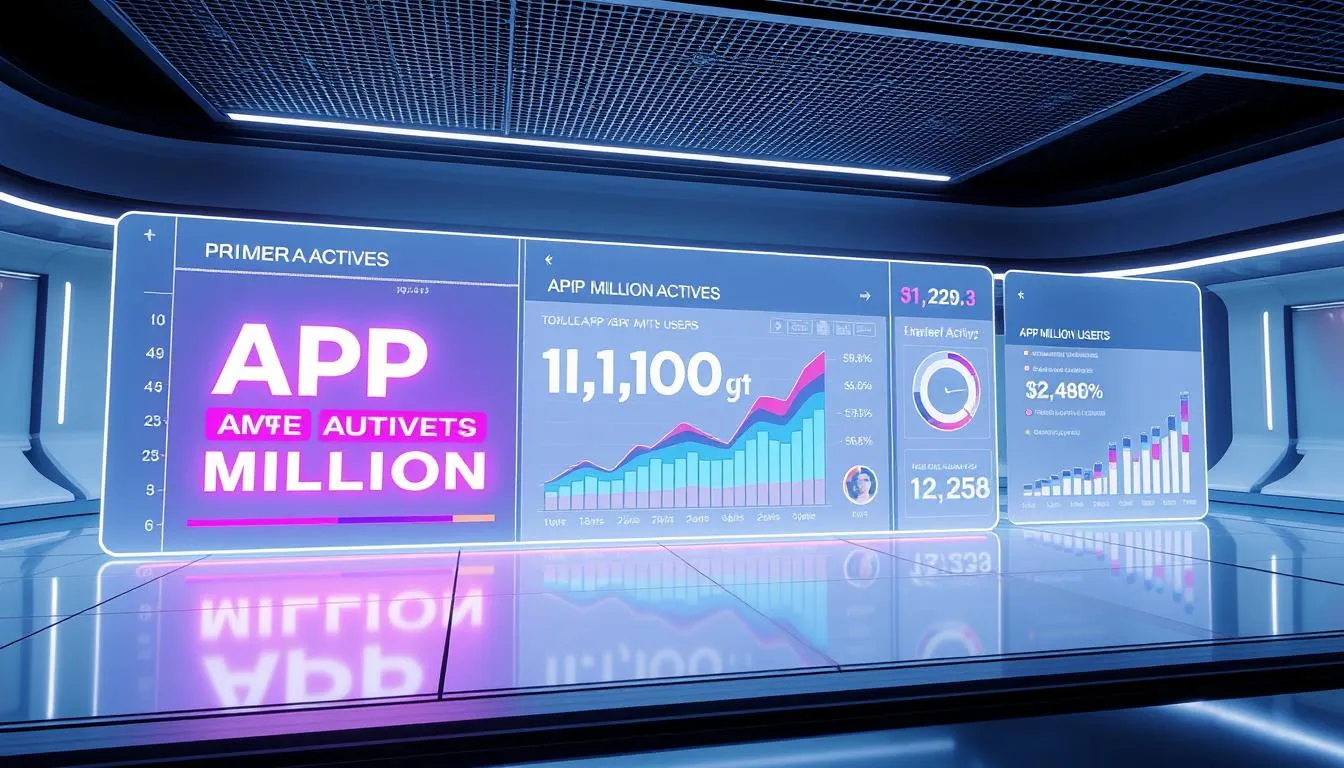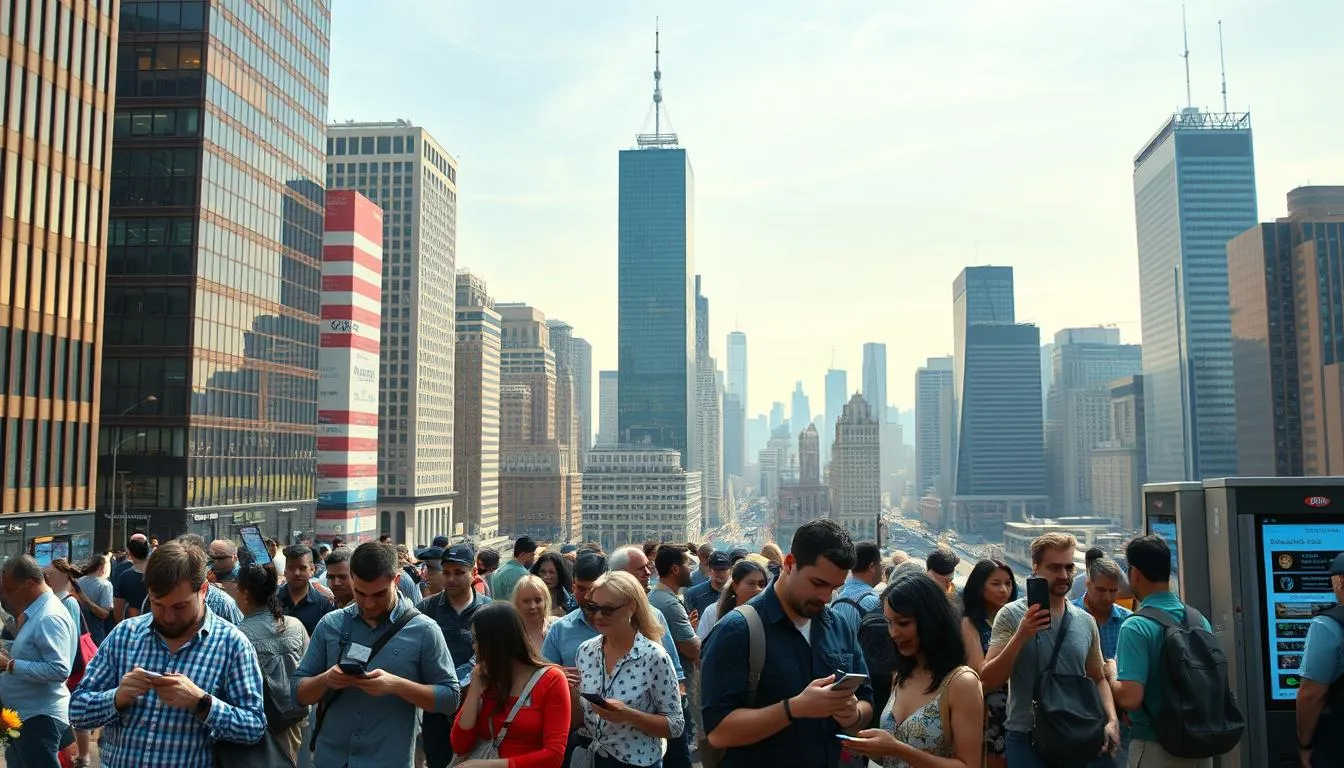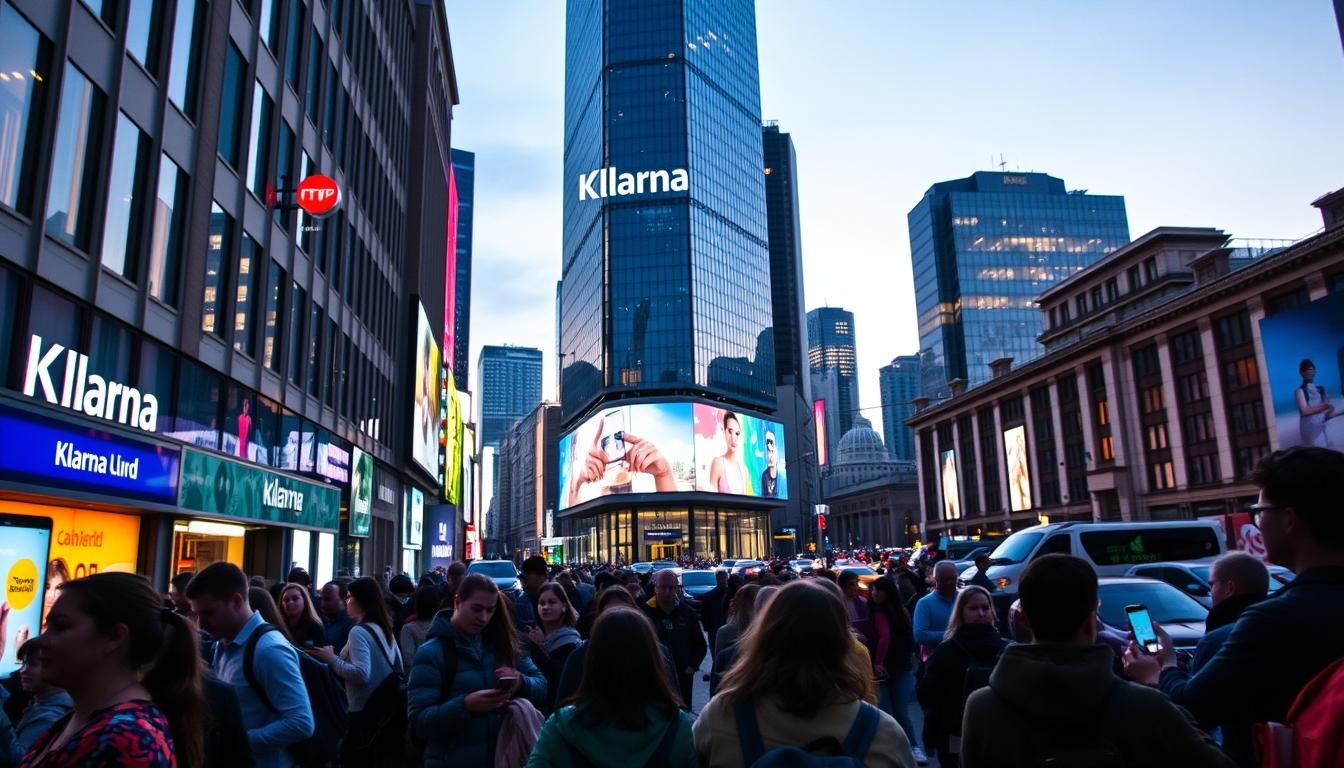Surprising fact: 85 million people used this buy-now-pay-later service in 2023, and the platform processed roughly 2.5 million transactions daily in 2024.
Why this matters: The market shows clear momentum. Revenue climbed to $2.2 billion in 2023, GMV hit $96 billion, and app engagement reached 31 million monthly active users in H1 2024.
This report frames those usage statistics alongside user behavior and merchant trends. You will see how app features and merchant integrations drive conversion and cart completion.
We connect revenue and growth to broader signals in the bnpl market and outline what brands should expect as the model evolves into 2025 and 2026. For insights into how competing BNPL platforms are performing, see our analysis of exploring the increasing Affirm loans popularity in America, which provides a detailed comparison of BNPL options and their market impact.
Key Takeaways
- Global users and app activity point to sustained consumer demand for flexible checkout.
- Revenue and GMV growth underline the models commercial momentum.
- Higher mobile engagement and merchant integrations lift conversion rates.
- Daily transaction volumes reflect scaling across categories and regions.
- Clear metric definitions make trends actionable for marketing and checkout strategy.
Executive Summary: Klarna usage increase and what it means for the BNPL market
H1 2024 delivers a crisp signal: stronger revenue, more transactions, and widening merchant reach. The data show total revenue rising +27% yearoveryear and US revenue up +38% in the united states market.
Scale is clear: about 2.5 million daily transactions and 31 million monthly active users. Annualized GMV sits near $93B following a $96B base in 2023.
Merchant breadth supports that growth. More than 575,000 active merchants are live, and 1 in 4 of the top 100 US merchants now offers the service. These integrations lift checkout conversion and repeat purchases.
- Momentum: Doubledigit revenue and rising usage statistics point to accelerating adoption.
- Scale: Transactions and users reach deep into everyday shopping behavior.
- Strategic takeaway: Reach, transactions, and users are reinforcing each other to create operational flywheels.
For executives, the message is simple: the combination of rising revenue, engaged users, and broader merchant partnerships signals durable market opportunity for BNPL players and retailers alike.
Methodology and Sources for this Industry Report
Our analysis pulls together public filings, market trackers, and thirdparty stats to create a consistent view of the sector. We harmonize definitions so readers can compare metrics across periods and peers.
Data sources used
Primary inputs come from company disclosures covering 20172024. We add independent trackers such as StatsUp/Analyzify for H1 2024 specifics and thirdparty syntheses of bnpl providers and website adoption.
Timeframes, definitions, and interpretation
Metrics are aligned by months and halfyear windows to support yearoveryear reads. We use company definitions for gross merchandise volume, take rate, and revenue. Projections for 2025 are marked as scenarios, not reported results.
| Source | Metric | Period | Value |
|---|---|---|---|
| Company filings | klarna users | 2023 | 85M global users |
| StatsUp/Analyzify | Gross merchandise volume | H1 2024 (annualized) | ~$93B |
| Thirdparty trackers | market share | H1 2024 | Snapshot vs peers |
| Company + trackers | Revenue & customers | 20172024 | $2.2B (2023); 31M MAU |
- Crosschecks: We verify customer definitions (active, MAU, total users) against filings.
- Normalization: Product and service definitions (Pay in 4, financing) are standardized for applestoapples comparison.
Note: The methodology balances transparency with conservatism to support actionable insight for readers tracking the broader market.
Whats driving the Klarna usage increase across markets
A mix of macro trends and better checkout tech is driving more shoppers toward interest-free installments. The shift reflects both economic pressure and smoother merchant integrations.
Macroeconomic context: inflation, credit tightening, and pay later appeal
High rates and tighter credit make predictable, zerointerest installments attractive. Shoppers facing stretched budgets see installments as a clearer way to manage purchases without revolving interest.
Merchant-side adoption, integrations, and conversion lift
Merchants pay roughly $0.30 + 3.29% per transaction for BNPL access. That fee often yields higher average order values and lower cart abandonment. For deeper insights into consumer behavior and spending patterns with buy-now-pay-later services, explore our comprehensive analysis of understanding Afterpay budgeting trends in the US.
- Footprint: 575K+ merchants globally support installment checkout.
- Brand awareness: US 52%, UK 80%, DE 87% strong recognition in key markets.
Consumer behavior shifts toward flexible payments and mobile checkout
Consumers now expect transparency and mobile-first experiences. App features like wishlists and reminders surface offers at intent and smooth the path to purchase.
Result: These forces work together across the market to drive durable growth in repeat use and category reach.
Usage statistics and engagement: app, users, and transactions
Active engagement metrics reveal how the checkout app has moved from occasional use to a daily shopping companion.
The platform reported 85M total users in 2023 and 31M monthly active users in H1 2024. These figures show a clear base of frequent visitors who return to browse and buy.
 Daily intensity matters: roughly 2.5M transactions occur each day, a sign that the product handles broad demand across categories. That depth helps merchants plan promotions and inventory with more confidence.
Daily intensity matters: roughly 2.5M transactions occur each day, a sign that the product handles broad demand across categories. That depth helps merchants plan promotions and inventory with more confidence.
Engagement patterns and retention
Markets vary. Loyalty in the UK and Germany sits above 80%, while familiar users in the US show lower but rising attachment.
“Power users often compress discovery, saving, and purchase steps inside the app, raising lifetime value.”
- Features: feeds, price alerts, and deal discovery drive repeat visits.
- Cohorts: customers who make several purchases show higher retention rate over time.
- Operational benefit: predictable transactions help merchants forecast demand.
| Metric | Value | Note |
|---|---|---|
| Total users (2023) | 85M | Global count |
| Monthly active | 31M | H1 2024 |
| Daily transactions | ~2.5M | Broad category reach |
For more context and data, see Klarna statistics for a deeper breakdown of metrics and market signals.
GMV, revenue, and profitability trends
Financial flows and margin moves show how volume and pricing combine to reshape profitability. The topline picture links gross merchandise volume with fees and losses to map a path toward breakeven.
Gross merchandise volume and mix
The platform posted $96B in GMV for 2023 and H1 2024 annualizes near $93B. That shows resilience as category mix and regional shifts normalize.
Revenue, take rate, and commission income
Total revenue increased about 27% YoY in H1 2024. A higher take rate of 2.54% (from 2.33%) helped drive that growth.
Commission income rose roughly 31% YoY, supporting a gross profit of about $585M in H1 2024.
Path to profitability
Credit losses were 0.46% of GMV in H1 2024, up from 0.39%, but still contained. Improved underwriting and scale helped the net result improve by 84%, narrowing losses to -SEK 0.3B for the period.
- Resilient volume: klarna gmv shows steady scale despite market swings.
- Margin levers: higher take rate and commission growth lift klarna gross profit.
- Profitability path: disciplined costs and lower relative losses point toward a clear route to positive net income.
United States focus: users, GMV, and revenue growth
American shoppers and large retailers together pushed volume and monetization higher in H1 2024. The united states is the largest market by user count and shows a clear runway into 2026.

US users and growth trajectory
There were 37M+ users in the US in 2023. Thirdparty projections forecast roughly 43.9M in 2024, 47.2M in 2025, and 49.3M in 2026.
Implication: the roster of active accounts supports broad retail reach and higher repeat purchases.
US GMV and revenue gains
H1 2024 showed strong momentum: US volume climbed about +30% YoY while klarna revenue rose roughly +38% YoY.
This combination signals both deeper checkout penetration and better monetization per transaction.
Top merchant penetration
Merchant adoption centers on major retailers. About 1 in 4 of the top 100 US merchants now offers the service at checkout.
That placement boosts conversion, expands category reach, and lifts average basket size.
| Metric | US value (H1 2024 / 2023) | Note |
|---|---|---|
| Users (2023) | 37M+ | Largest market by users |
| Projected users | 2024: 43.9M; 2025: 47.2M; 2026: 49.3M | Oberlo projections |
| GMV growth (YoY) | +30% | US H1 2024 |
| Revenue growth (YoY) | +38% | US H1 2024 |
| Top-100 merchant penetration | 25% | 1 in 4 top merchants live |
- Usage statistics point to durable behavior driven by mobile checkout and large merchant partnerships.
- For US brands, the product is a practical lever to win new users and capture more wallet share.
Market share and competitive positioning in North America and Europe
Regional footprint and checkout presence shape how market share settles across North America and Europe.
Website adoption leads the story. The company dominates site integrations in many categories, giving it more checkout visibility and higher repeat engagement in the world of BNPL.
Website adoption share vs. bnpl providers and global footprint
Adoption on merchant sites provides a steady stream of eligible baskets. That placement turns into higher approval flows and smoother settlement.
BNPL market share snapshots: US, UK, Germany, and implications
Estimates show roughly 5% in the US, 8% in the UK, and 23% in Germany. These gaps reflect maturity and local payment habits.
- Footprint: 575K+ active merchants anchor presence across regions.
- Competitive edge: stronger site adoption often converts to larger share and repeat purchases.
- Local strength: in Germany, historic Pay Now options boost trust and settlement speed.
Practical takeaway: Brands in north america and Europe should prioritize checkout placement with leading bnpl providers to capture more eligible baskets and lift conversion.
Product mix, services, and AI impact on growth
Flexible checkout options, paired with faster support and tailored recommendations, lift both baskets and trust.
The product mix spans Pay in 4, Pay Now (SOFORT), and longer-term financing to match payments to basket size and consumer preference.

How payment options shape GMV and category mix
Pay later and financing make higher-ticket purchases feel more affordable. That often nudges average order value higher and reduces drop-off at checkout.
AI assistant and recommendations
The inapp AI assistant cut average resolution time from 11 to 2 minutes, which builds customer trust and speeds problem solving.
Recommendation engines personalize discovery and surface relevant products, reducing steps to purchase and raising repeat visits.
Monetization levers
Merchant monetization blends interchange and typical merchant fees (~$0.30 + 3.29%).
Net revenue retention above 129% signals deeper income from existing customers and accounts.
| Feature | Impact | Data point |
|---|---|---|
| Pay in 4 / Pay Now / Financing | Affordability; higher AOV | Category mix shifts to larger baskets |
| AI assistant | Faster support; higher trust | Resolution time: 11 2 minutes |
| Recommendation engine | Personalized discovery; more checkouts | Higher engagement in app |
| Merchant fees & interchange | Direct income; margin levers | ~$0.30 + 3.29% per transaction |
Valuation, merchants, and scale effects on Klarnas net
Investor focus has shifted from headline growth to sustainable margins and clear paths to profit. That change shapes how the market prices fintech platforms and their long-term prospects.
Merchant network expansion and volume impact
The merchant network surpassed 575,000 by H1 2024, adding roughly 68,000 partners in the prior year. More merchants mean broader category coverage and more checkout touchpoints.
Deeper partnerships create steadier volume, better data for underwriting, and improved unit economics at scale. For each merchant added, the platform sees stronger discovery and lower customer acquisition costs.
Valuation reset and 2025 momentum
The valuation arc moved from a $45.6B peak in 2021 to about $6.7B in 2022 and then toward reported ~$9.2B in Q2 2025. This path reflects investor demand for proof of profit as much as growth.
Revenue per employee rose +73% YoY in H1 2024, showing operating efficiency that supports tighter net results and better income trends.
“Scale and discipline drive a clearer route to profitability.”
| Metric | Value | Implication |
|---|---|---|
| Merchants (H1 2024) | 575,000+ | Higher checkout reach; lower CAC |
| Added in prior year | 68,000 | Rapid footprint growth |
| Valuation (peak 2022 2025) | $45.6B $6.7B ~$9.2B | Investor shift to profit focus |
| Revenue per employee (YoY) | +73% | Improved operating leverage |
- Scale effects: automation, AI, and standardized onboarding lower servicing and support costs.
- Investor view: year-over-year growth must pair with margin improvements to sustain valuation recovery.
- Practical result: expanded acceptance boosts visibility, data quality, and bargaining power across the market.
Risks, regulation, and consumer credit dynamics in the United States
Growing regulatory focus and shifting credit dynamics are reshaping how buynowpaylater services operate in the United States.
Credit risk, charge-offs, and affordability narratives in BNPL
BNPL is a form of credit, usually shown as zerointerest to shoppers. Providers must manage repayment behavior as volumes scale.
Net credit losses rose to 0.46% of GMV in H1 2024, up from 0.39% a year earlier. That rate shift signals a modest uptick in chargeoffs and underwriting pressure.
Reminders, direct debit options, and clearer billing help consumers stay current. Good collections tech and AI risk tooling can limit losses while preserving the checkout experience.
Regulatory outlook in North America and its impact on growth
Regulators are reviewing disclosures, affordability checks, and data reporting to better protect buyers. New rules could standardize checks and late fee practices across the market.
For merchants, responsible positioning and transparent terms reduce friction and build trust. For providers, disciplined underwriting and improved data will be essential to balance growth and credit quality.
| Metric | H1 2023 | H1 2024 | Note |
|---|---|---|---|
| Net credit losses (% of GMV) | 0.39% | 0.46% | Small rise in chargeoffs |
| Affordability checks | Limited | Increasing | Regulatory scrutiny |
| Collections tools | Reminders | Reminders + direct debit + AI | Better risk controls |
Outlook and strategic recommendations for brands and retailers
Projected trends for 20252026 set a practical roadmap for merchants planning seasonal peaks and retention plays.
20252026 outlook: revenue, GMV, and market share scenarios
Scenario modeling points to continued growth driven by merchant adoption and product breadth.
Base case: 2025 revenue projected to exceed $2.4B and GMV above $92B. US users are expected near 47.2M in 2025 and 49.3M in 2026.
| Metric | 2025 projection | Signal |
|---|---|---|
| Revenue | > $2.4B | Revenue increased potential |
| GMV | > $92B | Stable volume |
| Merchants | 575K600K | Broader checkout reach |
Merchant playbook: improving conversion, AOV, and retention
Practical steps help retailers turn visits into repeat buyers.
- Placement: put pay later options high in the payments stack and show eligibility early on product pages.
- Mobile clarity: simplify messaging and checkout flow to reduce drop-off on small screens.
- AOV lift: promote bundles and higher-ticket add-ons with clear installment math and monitor retention rate by cohort.
- Re-engagement: use remarketing tied to app events and transactions, and test loyalty hooks to drive repeat visits.
- Planning: align marketing and inventory to BNPL peaks (holiday, back-to-school) to capture surges in transactions.
Consumer implications: budgeting, credit health, and responsible usage
Brands should surface clear terms and support tools that help shoppers manage payments and avoid surprises.
Good practice: offer reminders, easy returns, and transparent billing to protect credit health and sustain trust.
“Steady volume gains follow when AI cuts support times and returns become frictionless.”
Measure and protect value: track unit economics, contribution margin, repayment curves, and valuation-sensitive KPIs to balance growth and long-term profitability in the fintech landscape.
Conclusion
The recent figures tie higher app engagement and broader merchant reach directly to steadier transaction volume and clearer economics. Core metrics are strong: 85M users (2023), 31M MAU (H1 2024), and ~2.5M daily transactions.
Gross merchandise strength remains evident with ~$96B GMV (2023) and ~$93B annualized H1 2024. Revenue rose ~+27% YoY (H1 2024) and US revenue climbed ~+38% YoY. The merchant base tops 575,000, the take rate sits near 2.54%, and credit losses are manageable at 0.46% of GMV.
In short, the pay later model now scales with predictable volume, healthy revenue signals, and deeper customer engagement. For brands and investors alike, the message is practical: prioritize checkout placement, monitor net performance, and use these trends to capture share in the evolving BNPL market. For those managing multiple payment schedules from various BNPL services, consider using top money manager apps for budgeting and savings to track all installment payments and maintain financial organization.
FAQ
What are the main factors behind the recent surge in buy-now-pay-later adoption?
Shifts in consumer behavior toward flexible payments, higher mobile checkout rates, and merchant integrations have all played a role. Economic pressures like inflation and tighter credit have also made short-term, interest-free options more attractive. Improved app experiences and AI-driven recommendations help drive repeat use and higher conversion at checkout.
How do gross merchandise volume (GMV) and revenue trends reflect market health?
GMV growth signals higher transaction volume and wider merchant acceptance, while rising revenue and take rates point to better monetization. When GMV grows alongside improved net income and lower credit losses as a share of volume, it suggests the model is scaling more sustainably.
What metrics should brands track to measure impact from BNPL partners?
Key metrics include conversion lift, average order value (AOV), retention rate, and incremental GMV attributable to the payment option. Also track customer lifetime value, charge-off rates, and merchant fees to assess profitability and risk.
How big is the North American consumer base for these services, and what growth is expected?
The active user base in North America has reached tens of millions, with steady monthly active users and projections showing continued expansion through 2026. Growth depends on merchant partnerships, regulatory clarity, and consumer credit conditions.
How do take rate and commission income affect profitability?
Take rate determines the share of GMV captured as revenue. Higher take rates and diversified income streams (merchant fees, interchange, finance income) raise revenue, but profitability also depends on credit losses and operating costs. Improvements in net income typically follow lower charge-offs and operational efficiencies.
What role does product mix play in overall performance?
A balanced product mixshort-term split payments, immediate pay options, and longer-term financinghelps capture different purchase types and customer preferences. Short-term plans often drive conversion and repeat use, while financing can increase AOV and revenue per customer.
How significant is merchant penetration for long-term scale?
Broad merchant coverage multiplies transaction volume and consumer touchpoints. High penetration among top retailers boosts brand visibility and GMV rapidly, while a large network of small and midsize merchants sustains steady growth and diversification.
What regulatory and credit risks should stakeholders monitor in the United States?
Watch evolving state and federal regulations around underwriting, disclosures, and fee structures. Monitor charge-off trends, affordability scrutiny, and macroeconomic indicators that affect consumer repayment ability. Regulatory changes can alter underwriting practices and product availability.
Can AI and personalization increase retention and transaction frequency?
Yes. AI-driven product recommendations, tailored offers, and faster dispute resolution improve user experience and encourage repeat transactions. Personalization can also help identify credit risk earlier and optimize marketing spend.
How should retailers evaluate whether to integrate a BNPL partner?
Assess expected conversion uplift, impact on AOV, merchant fees, technical integration costs, and fraud or chargeback exposure. Pilot programs and A/B tests help quantify ROI. Also consider customer demographic fit and competitive positioning.
What are common monetization levers beyond merchant fees?
Interchange income on card transactions, late fees (where allowed), financing interest from extended plans, and value-added services like analytics or loyalty features. Diversifying revenue helps offset credit losses and supports margin expansion.
How do charge-offs and credit losses influence investor sentiment?
Rising credit losses can compress margins and raise concerns about underwriting quality, which may weigh on valuation. Conversely, improving charge-off trends and credible paths to profitability typically restore investor confidence.
What operational metrics indicate healthier unit economics?
Metrics include lower credit loss rate as a share of GMV, higher take rate, rising revenue per user, and improved customer retention. Efficient customer acquisition costs and steady merchant fee realization also point to better unit economics.
How do global market dynamics differ between Europe and the U.S.?
European markets often show higher penetration and regulatory frameworks that vary by country, while the U.S. market features rapid merchant adoption and greater heterogeneity in consumer credit behaviors. Market share dynamics depend on local competitors, payment habits, and rules governing consumer credit.
What should consumers consider when using short-term payment plans?
Review repayment schedules, potential fees for missed payments, and how plans affect budgeting. Use shorter, interest-free options for manageable purchases and avoid overextending with multiple concurrent plans to protect credit health.
